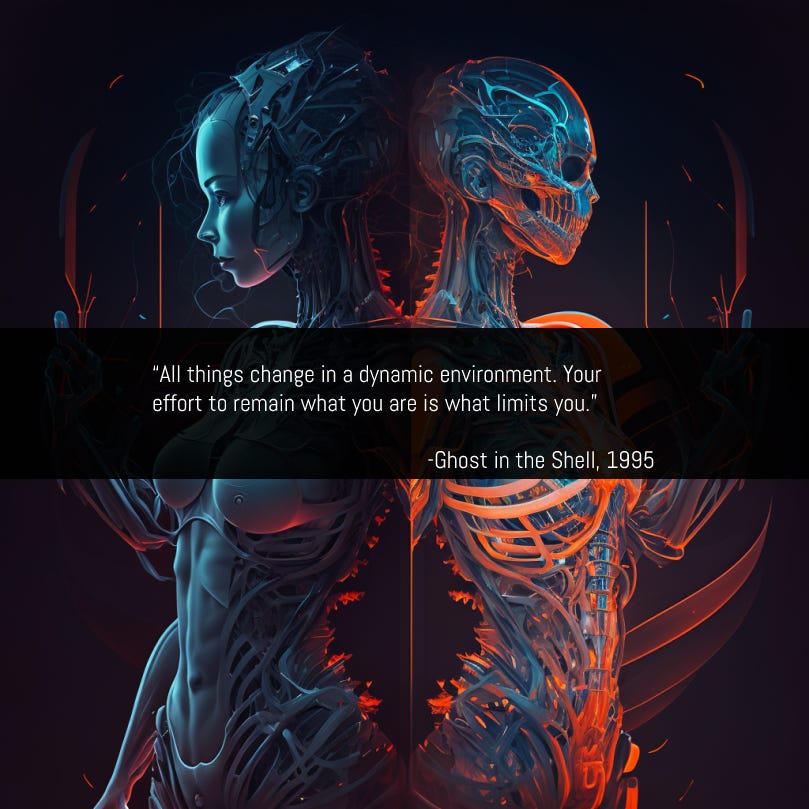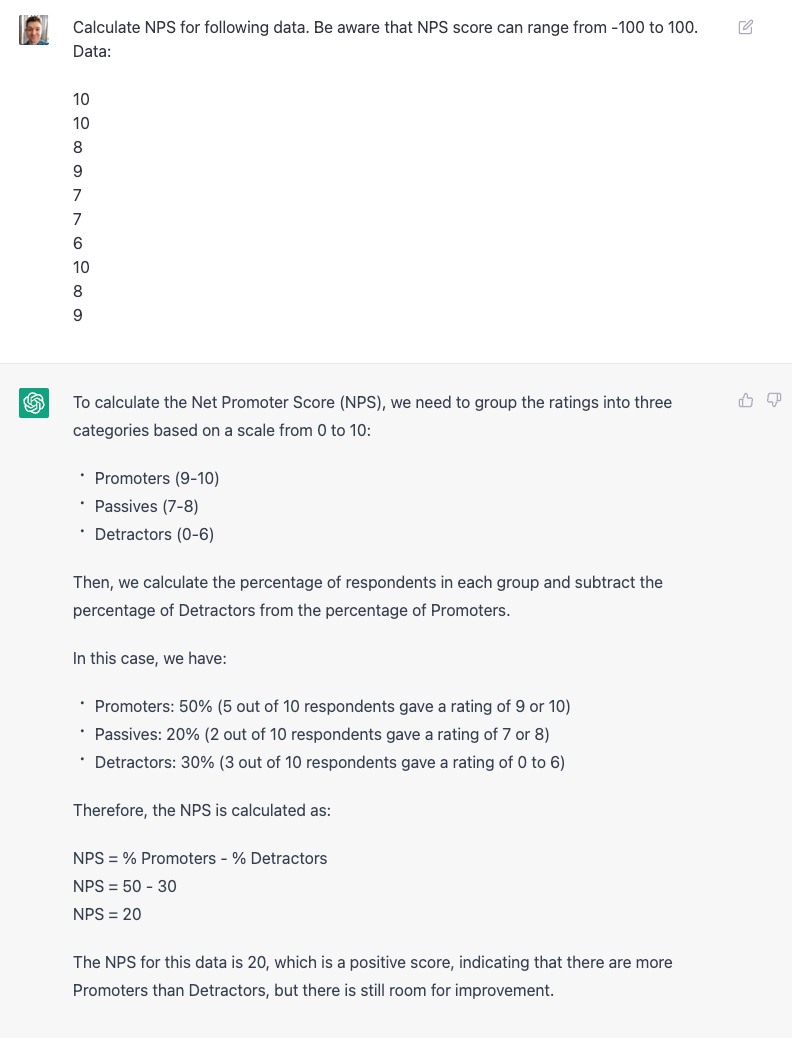What ChatGPT and Ghost in the Shell movie taught me about future of (UX research) work
Hey! I'm Filip and I work as UX researcher for couple of years now. Internet is full of hype about ChatGPT and other AI chatbots assistants, but what does it mean for our work?
Change is inevitable. Take it as your extension, not a blocker.
Recently, I watched "Ghost in the Shell," a sci-fi movie from 1995 that's surprisingly relevant to today's world of AI and emerging technologies like ChatGPT and its alternatives. Without giving away too much, the movie suggests that we shouldn't view machines and self-aware artificial intelligence as a threat to our jobs or the world. Instead, we should use this technology to create something new and expand our skills through synthesis with it. If you haven't seen this movie, I highly recommend it as it's even more relevant today than it was in 1995. However, the core idea is not new. Media theorist Marshall McLuhan wrote already in 1964 about how new media and technologies extend our bodies and minds.
The same idea applies to AI chat assistants if we approach them correctly and learn how to use them in our work and daily lives.
Educate yourself. AI chat results are limited as you are.
With all the hype around ChatGPT, many people tend to believe that the tool can do amazing and creative things on its own, but that's not the case. Without proper prompts from the user, it's nothing more than a fancy calculator. To get good results, we need to learn how to ask good questions and be able to spot the mistakes it can (and it will) generate along the way. It's better to give these chat assistants tasks that we already know about so we can decide whether we're getting good results or not. If our knowledge or creativity is limited, the results we get will be limited too.
Beware of “hacks” and fancy shortcuts.
They might work in the short term, but they're not sustainable. I'm writing this article because I've seen a lot of bad content, such as many "ultimate guides" with a random number of UX research prompts, that are generated just for the quick ride on the hype train. Without a basic understanding of how these AI assistants actually work, these guides are completely useless. We don't need to remember 100 good prompts. We need to know how to think in a way that will get us good results and utilize AI's power to the maximum, ideally every time we interact with it.
Treat it as your coworker, not an enemy
AI, including ChatGPT and its alternatives, can help us automate tasks that can be automated (it doesn’t ultimately mean they should), so we can deliver our work faster or focus on more strategic, creative, or core projects. That's why I embrace it. If something can help me free up my hands a little bit, so I won't have that much on my plate, it's an essential skill for me to learn.
3 ChatGPT (UX) research use cases that worked for me
Because I don't want my company to sue me for an information leak, I won't use real data in the following examples. Instead, I will use data generated mostly by ChatGPT.
Simple NPS calculator
Calculating NPS scores was always a pain for me. The formula itself is easy, but you either have to do it manually or via clunky online calculators. So here’s my example:
First data cleaning and analysis of open questions
ChatGPT is a natural language processing model that is trained on a massive amount of data. Thanks to this training, its complex statistical models can predict the meaning of words and whole sentences, or rather, make an educated guess. That's why it's capable of translating text from one language to another, making summaries, proofreading, or determining whether a survey response is positive or negative. However, it's essential to remember that ChatGPT is merely a statistical model. It thinks about the words and their meaning based on statistics, not because it genuinely understands them.
But it won’t stop me from throwing some open questions data on it asking if they can categorize them. Because, who loves coding large data sets, right? As a first step before further analysis, I think this is brilliant. Spreadsheet output you can also easily copy and paste into Excel, R, Python, or other tools and continue work.
Notice the mistake it made when calculating the percentages for categories. That’s probably only because I didn’t say it should work with the previously generated answer.
Co-creator of my writings and presentations
I already use ChatGPT to help me with my writing. It inspires me, gives me different points of view on things, and makes summaries for me. It's definitely great as an advisor and proofreader when I need to create a quick slide deck. I also use an AI chatbot to review the text you're currently reading. I think it’s a great tool to review content you personally created. But as I tool for end-to-end content creation without human prompt? Thankfully, we are not there yet.
Thank you for this long read! What about you? Do you use AI chatbots in your work? How? Leave a comment, I’m curious!
This is my first post in English, and I would love to hear your opinion on whether I should continue writing in English. If you enjoy my content and would like to support me, please consider making a donation. Your contribution would mean a lot to me.
Thank you!
Useful resources
All the provided pictures have been generated via MidJourney AI.
Understanding Media: The Extensions of Man by Marshall McLuhan | Goodreads
My class required AI. Here's what I've learned so far. (substack.com)
This a great article from a university teacher that requires to use of AI in his subjects. Full of great tips on how to approach AI chatbots.
A Teacher's Prompt Guide to ChatGPT aligned with 'What Works Best'





